10 Critical Tablet Compression Machine Parts
As any other equipment, tablet compression machine components play a vital part in the machine manual and daily treatments. Tablet press parts include a hopper, feeder system, punches, die system, turret, cam tracks, filling station, rollers, ejection cam, and discharge chute.
In this article, we’ll show you some detailed information about these parts.
Tablet compression machine hopper
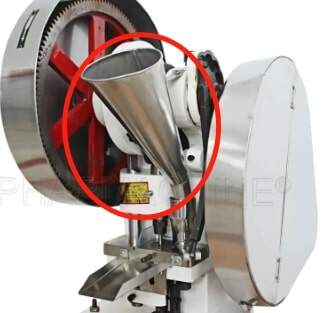
Hoppers are made to temporarily keep the raw material before their transformation to the die cavities. As a fundamental tablet press part, the simplest hoppers attached to the single-punch tablet compression press are just normal ones. They have the function of the ones we use to help fill the kettles at home.
However, to meet the requirement of tablet making, the hoppers are usually made of stainless steel rather than plastic. This trumpet-shaped hopper is easy to fill while using, but not suitable for further mixing of the raw material.
The inadequately mixed powder always causes trouble in following the compression process, so manually mixing the powder or using a blender to preprocess the raw material is always the first step before the ingredients are transferred to the hoppers.
Electric motors can help some types of tablet press blend the powder in their hoppers. However, most users tend to do the pretreatment before.
Feeder system
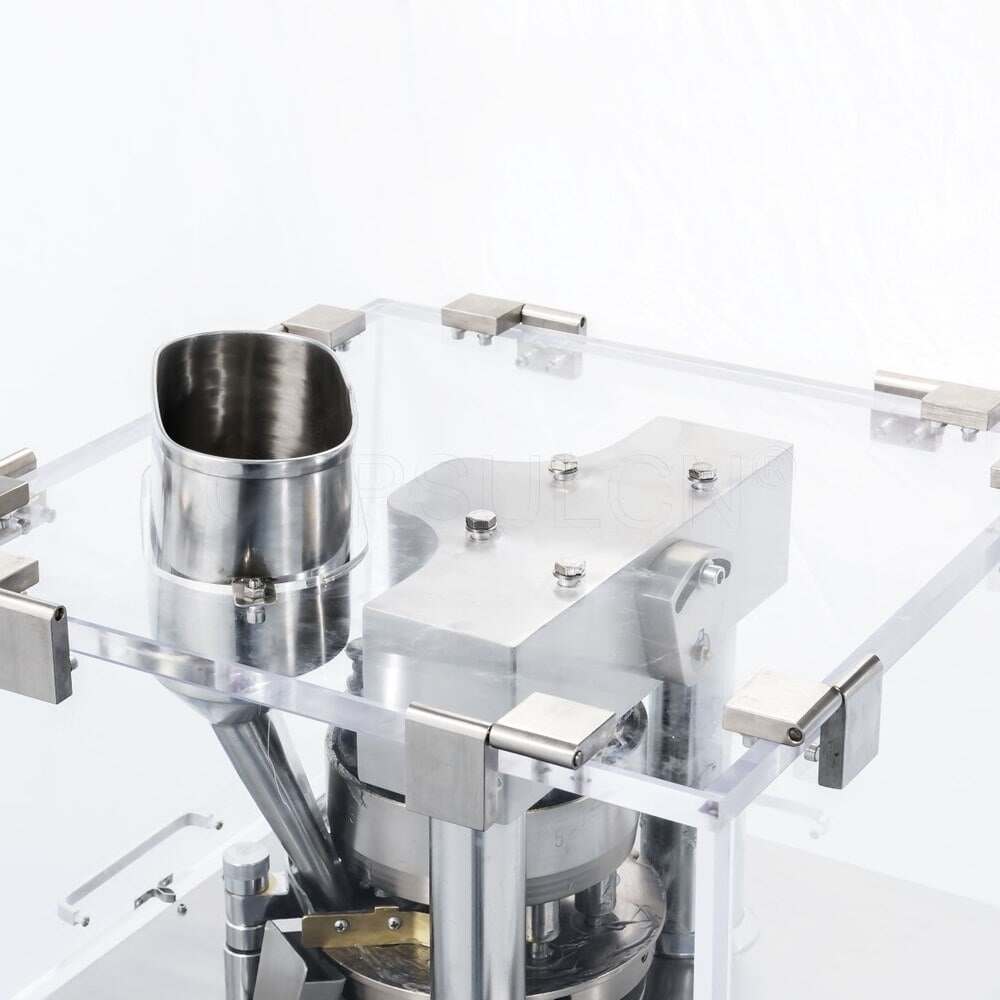
If the hopper is not directly inputting powder to the die cavities, a feeder system is required to do the job.
A feeder system contains several components, among them the feeder housing and feeder paddles are of the most importance.
The feeder housing is where the powder goes through after the hopper is filled. Therefore, it’s often made of stainless steel. This gives the powder a buffer area before it comes to the compression area.
The feeder paddles are the secret of the accuracy and consistency of powder pouring into the die cavity. They even add the powder to the die cavities.
Tablet press punches

The punches in tablet presses can be divided into two categories——upper punches and lower punches. These tablet press parts are of vital importance during compression process. In different kinds of tablet compression machines, these punches' functions are quite different.
The compression stage of a single-punch tablet press only requires the movement of its upper punch. That’s why it gains the name single punch tablet press even if it has a set of upper and lower punches.
The punch sets in a rotary tablet press act differently. The punch sets give the even force while the compression is processing.
Tablet die system

A tablet press has one or several die cavities to hold the powder, and all these are called the tablet die system. Together they work with the other tablet press parts during main process.
The grooves in dies are die cavities. They decide the depth and shape of the tablets. The common kinds of dies are tapered dies and straight dies. The tapered dies provide an angle for air to come out, and the straight dies split less powder while compression.
Tablet press turret
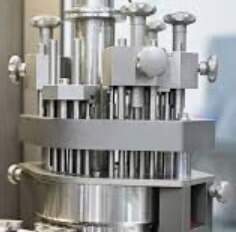
This tablet press part only appears in rotary tablet presses. The turret helps the compression parts combine accurately. The spinning speed also limits tablet production's pch (pieces per hour). Thus, stability is the most important feature of the turret.
Tablet press machine cam tracks
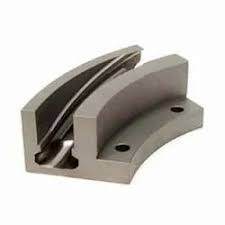
The cam tracks are another unique tablet press part in rotary tablet presses.
Unlike single-punch tablet presses, rotary tablet presses need to guide the punch sets up and down continuously. The cam tracks make it possible to treat dozens of punch sets in proper order.
There are three kinds of cams in a rotary tablet press: upper cam, lower cam, and ejection cam.
The upper cam controls the upper punches’ rising, giving the feeder system enough space for raw material adding. The lower cam guides the lower punches moving downward so the die cavities can have room for the powder. The ejection cam pushes the compressed tablets onto the die surface, and the lower cam pulls the lower punches back to prepare for the next round.
Tablet press filling station & weight control

The filling station will adjust the amount of powder in the die cavities with the help of a weight control system. After the raw material is added to the die cavities, the lower punches will pass the weight control module. The die cavities are overfilled at that time, so the filling station will push the overweight powder to the surface of the dies to assure every die cavity holds the same amount of powder.
Compression rollers
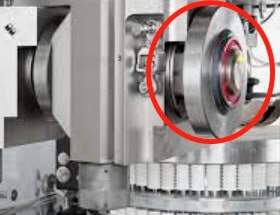
Most tablet compression machines have two sets of rollers. They provide punches with hydraulic pressure to achieve the compression procedure.
The pre-compression rollers force the air out of the powder. This step is vital to the quality of tablets. Later, the main compression rollers press the powder into tablets. The pre-compression uses only a little force, while the main compression provides a larger force. Therefore, the pre-compression rollers are much smaller than the main rollers.
Tablet press ejection cam
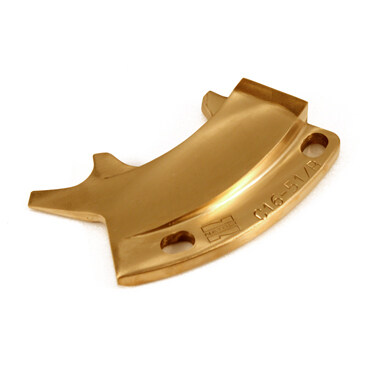
The ejection cam leads the lower punches to rise, and the fully made tablets come to the surface of the dies.
Take-off blade and discharge chute
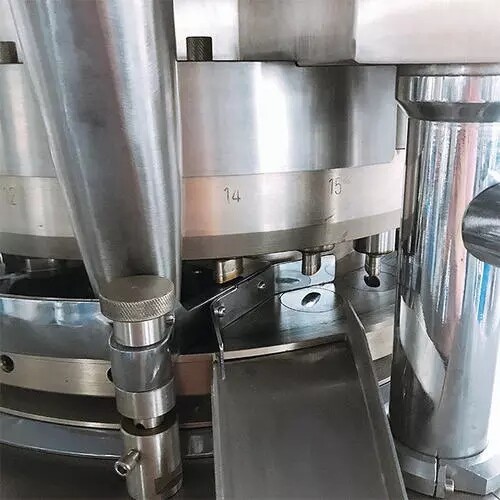
After the ejection of the tablets, the take-off blade would collect the pills from the dies. The discharge chute or discharge container holds the tablets before they are transferred to other places.
Conclusion
The tablet compression machines give the pharmaceutical industry and R&D a more efficient and precise way to deal with tablet production. Among all the pharmaceutical machine companies, iPharMachine is an expert and always ready to meet your demands.
To know more about tablet compression machines, please feel free to contact us.
Leave your comment
Also Offers


Containment Automatic Capsule Filling Machine SFK-703

Fully Automatic Dosator Capsule Filling Machine CZ-40

Our Team
As an expert in the pharmaceutical and pharmaceutical packaging industry, iPharMachine has provided solutions for hundreds of pharmaceutical and health product manufacturers for 17 years. By visiting customers, we get good reviews from our customers.
- info@ipharmachine.com
- English Español Deutsche







